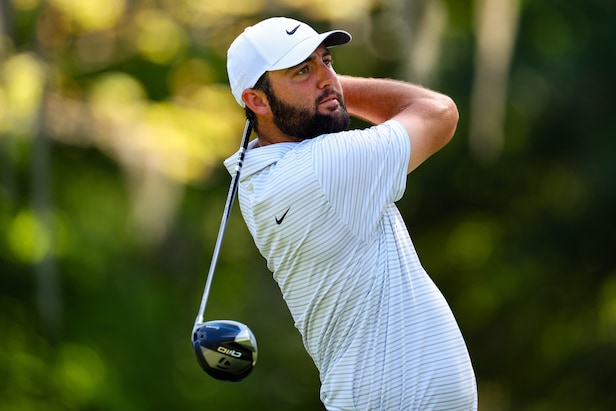Opinion: Modesty Becomes You – Australian Golf Digest

- by Admin
- June 25, 2024

Decorum, spirit and the rise of the modest professional
Who could fail to be impressed by the modesty displayed by Scottie Scheffler upon his being arrested outside the venue of the PGA Championship? Handcuffed and taken to the local police station where he was forced to wear an orange jumpsuit for a perpetrator photo, he never told the police he was the world’s top-ranked golfer and quietly performed stretching exercises in his jail cell while waiting to be released. This sort of self-effacing conduct ought to be an example to every sports-loving young man or woman. Imagine the scene if the arrestee were named Kyrgios, or McEnroe!
Reflecting on Scheffler’s modesty, it occurred to me that all golfers, amateur or professional, find our attention drawn to a single question. It isn’t, “Which is the best course?” Nor is it, “How can I play better?” It is, “Who is the champion golfer?” We constantly seek to discover who is the best player. This instinct has been on foot since the earliest Olympic Games and perhaps even from the Neolithic Age.
The only way to determine the answer is a match: an organised competition played according to a set of rules. Hurling a javelin or discus, running a race over a set distance, or leaping upwards or lengthwise were the early forms of sporting competition. And then along came golf, with its raw battle against both nature in the form of a links course, and against the mind, body and nerves of an opponent.
Competitive tennis or sailing or the many team sports have their attractions, but golf is a test more anchored in the body, the hands and the mind of homo sapiens. We golfers struggle through five elements: the drive, the long iron, the approach, the hazard shot and the putt. To prevail, you must conquer your demons in every such element. Hence the man or woman who undertakes this awesome challenge as an occupation deserves our respect and admiration, no matter what his or her results may be.
To contend as a professional golfer is to invite ruin, embarrassment and regret. Yet those propelled to take these risks in such an adventure usually see no realistic alternative. The game, or its professional competition, is hard to resist.
So, what do we ardent observers look for in a professional player?
First and obviously is superior skill at the game, not just in the moment but for years and even decades. In Australia we’ve been blessed with such champions in abundance given our relatively small population. From the pantheon of champions, men and women, we have won most major championships several times, though the Masters remains an Australian victory only once, thanks to Adam Scott (and Steve Williams, our Kiwi cousin).
Second, we seek personal decorum in a champion. Displaying good manners during competition, during victory and in life off the golf course is a pre-condition for enjoying our admiration. (Charisma, or crowd-pulling magnetism, is a different thing.) When you look carefully at Minjee Lee, Cam Smith, Min Woo Lee, Marc Leishman, Adam Scott, Lucas Herbert, Cam Davis and Hannah Green, you see modesty, humility and obvious personal qualities writ stark and large. This generation of players is practising an Australian tradition of sporting decorum that goes back to the ’50s and ’60s of golf and probably back to the Bradman cricket side. These young Australians (some not so young, too) deserve not merely our support and encouragement but also our gratitude for the example they set. God knows, young Australians have plenty of atrocious examples to follow among public figures.
Of course, we all look to the leaderboard in the big events to see how our favourite players are faring. Who is to be the champion? Please, let it be an Australian! But should one of our own earn that title, we rejoice all the more for their acceptance of the accolade being done in a fashion not boastful or triumphant but acknowledging that the feat was an unlikely one: somehow, I survived, a stroke better than my peers. On any other day it would’ve been someone else.
That is the true spirit of golf. There but for the grace of God…
Getty images: Ben Jared
The Latest News
-
December 28, 2024‘Never seen this’: Aussies left baffled by umpire’s ‘rushed’ call in ‘farcical’ scenes
-
December 28, 2024AUS vs IND 4th Test: Updates, scores, highlights as India bowled out for 369 | Sporting News Australia
-
December 28, 2024Australia v India: fourth men’s cricket Test, day four – live
-
December 28, 2024Live: Konstas to take centre stage again as Australia finally bowls India out
-
December 28, 2024You will be shocked by how much money these popular public courses rake in – Australian Golf Digest





